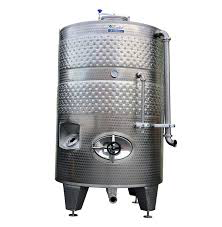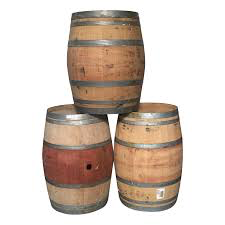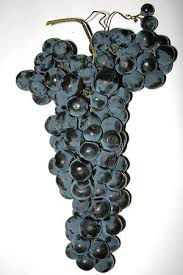Sources of Volatile Acidity
Joy Ting
January 2019
There are several reasons why a wine might have high VA. Although VA can be formed by the chemical hydrolysis of hemicellulose when wine is aged in oak, most volatile acidity comes from the activity of microbes such as oxidative acetic acid bacteria, malic acid bacteria, oxidative yeasts, and mold. (1) Not all VA is considered a fault. It is normal to have small amounts produced by yeast during fermentation (0.3 g/L). At this level, VA can even add complexity. Acetic acid is also an important intermediate in the production of acetate esters that generate much of the wine’s young fruity character. (1) VA accumulation can happen at many different stages in the winemaking process. Following is an outline of the most common causes.
The Fruit
Fruit that is compromised on the vine or during harvesting can lead to high VA wines. One culprit is the oxidative bacteria Gluconobacter. It is frequently present on at a rate of 10^2 cells/g on healthy fruit. However, on damaged fruit, it can be found in concentrations up to 10^6 cells/g. This microbe is good at metabolizing sugar, but it produces a copious amount of volatile acidity as a result. (1)
Another source of volatile acidity comes from the fungi that infect fruit with bunch rot. Bunch rots include oxidizing enzymes that lead to degradation of phenolics and anthocyanins. These fungi also reduce nitrogen and sugar levels. Reduced nitrogen can lead to further accumulation of VA by stressed yeast during fermentation. (2)
Compromised fruit also contains elevated levels of oxidative yeasts such as Klockera and Hanseniaspora. These produce both acetic acid and ethyl acetate and can be especially active at low temperatures such as those found during cold soak or during a long lag phase of fermentation. (1)
When picking compromised fruit, it is important to limit the time grapes spend in bins, as damaged fruit provides a sugar source for any bacteria, yeast, or mold that are present on the grapes. If grapes have been damaged by mold, they likely have higher levels of acetic acid bacteria already resident as a result. A fast processing and start to fermentation is often the best option to limit accumulation of volatile acidity. (2)

The Fermentation
The majority of VA accumulation during fermentation is a function of yeast metabolism. If yeast are stressed by a lack of nitrogen or adverse fermentation temperatures, they can produce acetic acid as a result. Zoecklein (3) provides an excellent summary of these conditions. However, excessive VA is not producing during normal fermentations.
Fermenting juice is generally a low oxygen environment, which helps limit VA accumulation even with compromised grapes. Gluconobacter diminish during this time and are replaced by Acetobacter (also present on the grapes). Though Acetobacter is not producing acetic due to lack of oxygen, they are still present and will come back to metabolic activity later in aging.
VA can start to accumulate in the later stages of fermentation if fermentation lags and CO2 is no longer produced at high enough rate to protect the wine. Acetobacter can start to convert ethanol to acetic acid when oxygen is present. Lactic acid bacteria can metabolize sugars and produce a high level of VA as a result. LAB other than Oenococcus can cause high levels of acetic acid from the metabolism of citric, malic, tartaric, glucionic acids. Each of these needs oxygen to work and is more common in warm environments with low SO2 and pH higher than 3.5. Many wineries inoculate for malolactic fermentation in order to control the strain of bacteria and limit production of acetic acid as well as diacetyl and other byproducts. (1)

Aging
VA accumulation during aging can be chemical or biological. Even in properly stored wines, an increase of 0.06 – 0.12 g/L is expected per year in new wood due to the breakdown of wood hemicellulose by acid in wine. (3) However, spoilage during aging is usually due to microbes.
Acetic acid bacteria convert ethanol to acetic acid in the presence of oxygen. They can remain viable in wine for years under anaerobic conditions and can substitute quinones for oxygen in metabolism allowing them to continue to metabolize (slowly) when no O2 is present. (1) Storage in oak barrels allows for small amounts of oxygen (30 mg/L/yr) (3) while cellar practices such as racking and topping provide a brief bolus of oxygen to the wine. Population levels of Acetobacter have been reported to increase during racking. (1) If headspace is allowed to develop by lack of topping, increased surface area as well as available oxygen can lead to rapid VA accumulation.
Another potential source of VA during aging is Brettanomyces. Though Brett infection is characterized by accumulation of 4-ethyl phenol (4-EP) and 4-ethyl guaiacol (4-EG) that lead to barnyard and band-aid flavors and odors, Brettanomyces can also lead to rapid accumulation of VA. Zoecklein (4) cites two studies, one that reported an increase from 0.31 g/L to 0.75 g/L acetic acid in a white wine after 20 days of incubation with Brett, and another that reported 0.62 g/L under the same conditions. Like Acetobacter, Brettanomyces will utilize any oxygen that is present to metabolize sugar and produce acetic acid.
To limit VA accumulation by Acetobacter and Brettanomyces, keep the pH of the wine low, minimize O2, and keep SO2 topped up. Storage in low temperature cellars also slows down microbial metabolism. Also, keep bungs sealed tightly, and limit the number of times you pull the bung. Due to evaporation of water and ethanol through barrel staves, a slight vacuum develops in tightly bunged barrels that leads to a low oxygen environment in the headspace.(3) In Bordeaux, it is common practice to top the barrel, seal the bung tightly, turn it at an angle, and not touch it again for 6 months. The tannins in the wine coupled with the vacuum in the headspace are sufficient to protect wine from oxygen. (M. Finot, personal communication, Dec 2018)
References
- Jackson, R. S. (2014). Wine Science: Principles and Applications(4 edition). Amsterdam: Academic Press.
- Stern, E (2013) How Winemakers are Eliminating Volatile Acidity in Wine. Wine Business Monthly, November 2013
- Zoecklein, B. (2011) Enology Notes #158: Volatile Acidity. Retrieved from https://www.apps.fst.vt.edu/extension/enology/EN/158.html.
- Zoecklein, B., Fugelsang, K. C., Gump, B. H., & Nury, F. S. (1995). Wine Analysis and Production. New York: Springer.

